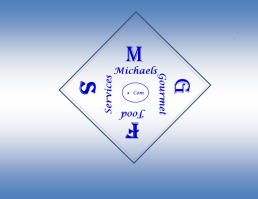
OUR MISSION
Michael’s Gourmet Food Services was started for many reasons. As we worked alongside countless talented individuals with a huge passion for food service, we realized that there were too many gaps in knowledge between schools, business models and franchise concepts. Watching many of these businesses fail was disheartening. Restaurant failure percentages range from 65 to 75%, primarily from lack of managerial experience, poor hiring and training methods, nonexistent standardized operating procedures and inadequate or poorly planned business models.
It may look easy by the number of food service establishments in the community, but the hours are truly endless, operational set up is exhausting, and then the question becomes how much money is wasted on mistakes and ultimately how much money are you making on the dollar? There are so many variable obstacles to bring the company to the 5-year level.
We Want You to Succeed! We designed our website for operational research. Our customizable products and services, operational procedures and advanced spreadsheets give you an immediate advantage to hit the ground running. At MGFS we have incredible dedicated team members to get you up and running and maximize your hard-earned dollars. And remember the first hour of consulting is free, so give us a call today at 1-603-988-9048.
POST COVID RESTAURANT OPERATIONS – A BRAVE NEW WORLD
With the devasting disaster of the food service industry post Covid, there are many misconceptions prevailing in the restaurant industry, but, in particular, in the Independent restaurant sector, by far the hardest hit.
And with good reason. Many new startups have no idea what they are getting into, especially if they have the “glamour notion” of the 80’s and 90s. Back then, in NYC, the restaurant industry in NYC was dubbed the decade as the “Great Gorilla Wars”. There were restaurants and food service operations everywhere, sometimes 20 in a three-block radius. Try competing with that! That was the beginning of the 60 to 70% failure rate so prevalent today.
Many food service entrepreneurs, (or potential entrepreneurs) still use the old methods of determining what and where to open an establishment, without doing the actual bookwork of demographics, cost basis analysis, extensive what if scenarios, and actual marketing models. Granted they take time, knowledge, and capital just to get that done alone, but if you’re going to work 80 to 90 hours a week, you really need to do the research months ahead of time (of course with no pay).
Considering how many different areas of expertise, (yes, I did say expertise) one must acquire just to understand modern day business models; how to do feasibility studies (remember that one?), theoreticals etc., and the actual time involved, it truly must be a dedicated effort, with the notion time is money. Many misconceptions have arisen that are detrimental to independent restaurants and have a negative effect on operations. Some simple ones are: everyone should be called a chef, you have a staffing shortage, and professional training is expensive and not actually necessary.
Below is a basic management format for determining decision making when evaluating the many situations of probability new entrepreneurs will find themselves in. It can help guide through the quagmire of evaluating and opening a successful independent restaurant operation.
For more information and data, contact me at mpentasuglia@comcast.net, or www.info@mgfsllc.com.
IDENTIFYING PROBLEMS AND ANALYZING SOLUTIONS
Identifying the Problem
A problem is a situation requiring a solution.
A symptom is a sign or indication of something that appears to be a problem.
Many problems may have more than one symptom.
Most problems have more than one solution.
What are the symptoms of the underlying problem?
The symptoms cannot be alleviated until the problem is identified and corrected.
Managers can identify a problem by asking questions and gathering information.
The symptom is used to determine what type of information needs to be gathered and used to identify the problem.
It is better to study the evidence that there is a problem than to wait until a
symptom or the problem appears and is more difficult to contain.
Determine and List Possible Solutions
List all possible solutions.
Do not overlook any possible solution in the problem-solving process.
Identify at least three solutions.
To identify possible solutions a manager can -
- Have a group participate in a brainstorming session,
- Review solutions that have been used in the past or used for related problems.
- Discuss the problem with other managers, experienced employees, customers, or outside experts to help identify possible solutions.
- Trade publications, online forums, and related social media forums may have already discussed possible solutions
Determine prerequisites for selecting solution, cost, time, effectiveness of
cost to time.
Analyze the Solutions
Each solution must be studied thoroughly and objectively.
To study the solutions effectively, retrieve information from business records, trade publications, trade associations, consultants, government sources or the internet.
Study the strengths and weaknesses of each possible solution.
Compare each possible solution.
Classify each solution with some method of best, second best, and least desirable.
Compare the solutions on how effectively each will solve the problem, not just how well they treat the symptom.
Determine the two best solutions.
Sometimes it is necessary to conduct an experiment or test to find out which is the best solution. In large decisions, tests are done in one section of the business to determine how the results will affect other parts of the business. This will set apart solutions that are the most effective for a company’s problem but not necessarily for a division’s problem.
Select the Best Solution
The last step is to make a final decision amongst the remaining solutions.
Managers may take more time for larger decisions because they can have company-wide implications and affect the bottom line.
Some solutions require upper management confirmation and cooperation before implementation can begin.
Managers must now determine the best way to implement the solution and what persons or teams are necessary for that implementation.
As implementation progresses, management should monitor and gather information on the effectiveness of the solution. Does it require additional effort or another solution?
Once the solution has been determined to be effective, managers should document the symptoms, problem, and solution to include in corporate policy, or for future troubleshooting in a similar situation.




